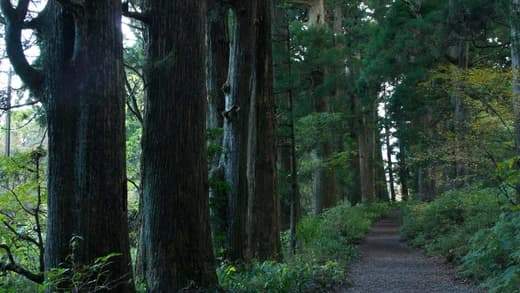


The Old Tokaido Way

ABOUT
Explore Hakone seeks to provide once in a life-time travel experience for our customers. We are dedicated to sharing our unique and rich local history and culture, beautiful nature, and the meeting of people in the community
Running through the heart of Hakone is the Old Tokaido Way. The road was one of the most important in all of Japan as it served to connect the cultural and imperial capital of Kyoto with the political and economic center of Tokyo. The road has been the setting for numerous stories, the backdrop for ukiyo-e art. It was the route that the samurai and traveling royalty would use.
Hakone has some of the best-preserved sections of this wonderful piece of history. Walking among the trees and on the stone-paved road transports you to a different time. It is an experience to be felt with all your senses.

During the time of the samurai, the Tokaido Way was the most heavily used one out of a small number of main roads present at that time. The Tokugawa Shogunate created a number of policies that made the Tokaido a piece of Japanese culture.
Distant daimyo, feudal lords, were forced to live in Edo during alternate years. They made the move to Edo in long and extravagant processions of servants and samurai. This move ensured a regal atmosphere and high maintenance of the road, which was used not only by the nobles but commoners too.

The Tokaido Way was renowned for its notoriety. Policies severely restricted the movement of common people, especially women, during the Tokugawa reign. In order to prevent a rebellion and limit communication between areas, travelers were forced to obtain permission to travel on the road.
These papers would be checked at certain checkpoints along the road, with one of the most famous ones being on the shores of Lake Ashi in Hakone. You can visit the rebuilt barrier gates of the checkpoint. It was faithfully reconstructed in the same place they occupied for hundreds of years.

When walking along the Old Tokaido Way one feels as if transported back in history. This is especially true when you visit the Amasake Chaya with its rich history.
Along the busy Tokaido road, there were businesses catering to the needs of the travelers. These were places to stay, eat, drink and rest.

The Amasake Chaya has been serving the same menu, in the same location, in what is essentially the same building for hundreds of years. It is now run by the 13th generation of the same family. You can enjoy the same mochi and sweet amazake that was served to other travelers centuries ago. Walking under the thatched roof, on earthen floors, with wooden pillars that show their age is a special genuine experience that takes you back to the olden days.

The Tokaido Way has been the setting for Noh (classical Japanese drama) and traditional artwork. Utagawa Hiroshige was considered one of the last great masters of ukiyo-e (Japanese woodblock printing.) One of his most renowned pictures is of the view of Mt. Fuji from the Tokaido Way. By experiencing the Tokaido Way you will truly gain a sense of what Hiroshige’s work depicts and also gain a feeling of how it must have looked and felt to travel in the past.

A wonderfully preserved section of the road exists on the banks of Lake Ashi. Here you can walk among the towering trees that were planted over 300 years ago under the Tokugawa Shogunate. The road has scarcely changed over that time. The trees that were planted to provide shade to travelers still do their job hundreds of years later. Walking among the quiet giants gives you time to appreciate and feel the history of this beautiful road. Any notable figure in the Edo period would have traveled on this road. Imagine a time when samurai, running messengers, traveling nobilities and princesses, pilgrims and merchants all used the same road you can walk today.
The Old Tokaido Way runs from Hakone Yumoto and up the mountain past the shores of Lake Ashi. The most impressive sections are near the lake between the Barrier Check Point and the Amasake Chaya.
Featured Tours
Selected from our acclaimed tours that offer unique trips and experiences.